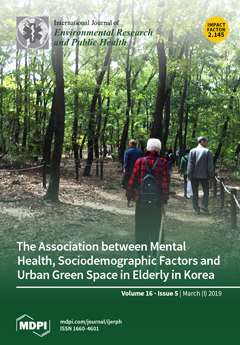Background: This study examined the generalized effects of cycle ergometer aerobic interval training (AIT) on psychomotor behaviors in individuals with Parkinson’s disease (PD), including bimanual motor control, cognitive function, and neurological motor and non-motor parkinsonian signs. Methods: Twenty mild to moderate PD patients
[...] Read more.
Background: This study examined the generalized effects of cycle ergometer aerobic interval training (AIT) on psychomotor behaviors in individuals with Parkinson’s disease (PD), including bimanual motor control, cognitive function, and neurological motor and non-motor parkinsonian signs. Methods: Twenty mild to moderate PD patients were randomly allocated to the following groups: (1) trained group (PD-TR,
n = 10), which besides receiving usual care, underwent an 8-week moderate intensity AIT program; or (2) control group (PD-CO,
n = 10) which received usual care, including participation in conventional physical therapy. Both groups were tested before and after the 8-week AIT program period with the following assessments: (1) laboratory analyses of bimanual motor control, (2) psychological evaluation of cognitive function, and (3) an evaluation of neurological parkinsonian signs. Results: The PD-TR group exhibited improved (1) bimanual motor control, reflected by a decreased time (
p = 0.013) and increased rate of grip force development (
p = 0.013) in the manipulating hand and a decreased time delay between grip force initiation in the manipulating and stabilizing hand (
p = 0.020); (2) executive function, reflected by decreased performance time in part II of the Stroop Test (
p = 0.007); and (3) neurological parkinsonian signs, reflected by an amelioration of upper-extremity bradykinesia (
p = 0.015) and improvement in daily life manual functions (
p = 0.004), mood, and intellectual function (
p = 0.005). Conclusions: Following an 8-week moderate intensity AIT program, patients with PD exhibited improved psychomotor behaviors, reflected by bimanual motor control, executive function, and neurological parkinsonian signs.
Full article





